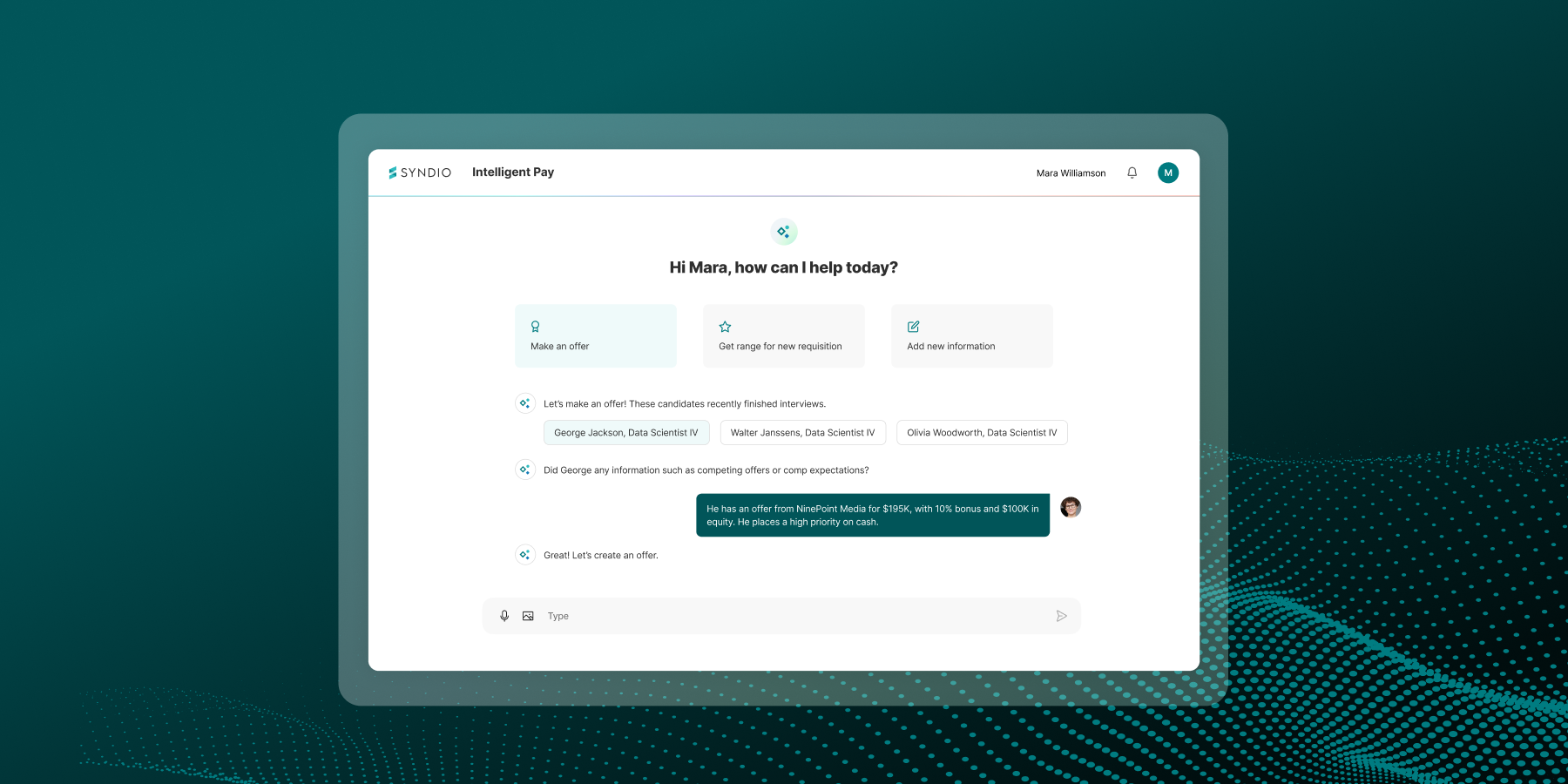The pay transparency era has arrived, and with it, a new and urgent requirement for every employer: pay explainability. Here’s what you need to know about pay explainability and why it’s important.
What is pay explainability?
Pay explainability is the ability to clearly articulate how your organization determines pay, how you apply pay policies to individual employees, and whether pay decisions are equitable and consistent.
Organizations with high pay explainability have clear, transparent pay practices that HR leaders and managers can easily communicate and that employees can easily understand. When employees know how their pay is determined, how pay levels and increases are determined, and that their pay is equitable, it builds shared accountability and commitment, and fuels a culture of trust.
Pay explainability: Why now
In January 2021, Colorado enacted the first law requiring that pay ranges be included in job postings, following on the heels of California first requiring this information be shared with applicants. In a span of only two years, pay transparency laws have emerged in over a dozen states or jurisdictions and pay equity reporting and transparency laws are sweeping the world. And there’s no slowing down the momentum. Some of the latest laws introduced look like “pay transparency on steroids.” For example, Hawaii’s proposed pay transparency law would require employers to send employees an annual update on their job’s salary range for substantially similar roles.
Complying with the new era of transparency is not the same as successfully tackling the pay explainability that comes with it.
Now that ranges, and in some cases reports, are public, employees are learning their salaries in relation to their peers. And they’re asking tough questions that companies are largely unprepared to answer; questions like:
- I am seeing my range for the first time; what does this mean?
- How is my pay determined?
- Where am I in the range relative to others? Why am I low in the range?
- How do I move to the top of the range for my role? How do I move to a higher-paying role?
- Why are the ranges so wide?
- Is my pay fair?
The best companies are striving to not simply react to these questions, but to get proactive about sharing this information with employees and candidates.
Where to start
In theory, pay explainability is simple: You need to explain why people are paid what they’re paid. In practice, it’s more complex. The era of pay transparency is making it even more challenging since employees now have more information about pay than ever before.
Employers need to start by rethinking their compensation programs. Until now, companies have relied on decades-old compensation and leveling structures that were designed for compensation management — not communicating about compensation. While extensive communications and training have always accompanied your compensation programs, new salary disclosure requirements are changing how employees perceive pay. By focusing employees on pay for individual jobs, the new laws are in direct conflict with many compensation programs designed to manage pay for multiple jobs within wide grades. Employees are having difficulty connecting the things you have always told them about how their pay is managed with what they are seeing posted. New salary disclosure laws make the status quo unsustainable.
Pay explainability must become an essential component of your compensation program design. Your pay programs will otherwise be ineffective and, at worst, do the opposite of what you intend by confusing the very people you are working to reward. To update compensation programs for the pay transparency era, you need to make them clear, consistent, and easy to explain. Are you paying people based on how you say you pay? Is it consistent across your employees, jobs, and organization? Are your compensation programs working as intended?
Companies using outdated compensation programs will face an uphill battle with pay explainability. Companies that make the effort to modernize their compensation programs will ease their path to pay explainability — and gain an edge with employees and prospective hires in the process. Not only will you be able to answer questions with confidence, but you’ll be able to publish more accurate ranges moving forward.
For more detailed guidance, read Nancy Romanyshyn’s articles on How to Rethink Compensation Programs in the Pay Transparency Era and How to Set Salary Ranges That Are Useful, Fair, and Explainable.
The benefits of pay explainability
A recent survey revealed that 80% of respondents said employers should always explain how pay is determined. When companies deliver on these expectations, employees win — and so does the business.
A Gartner press release states, “When organizations educate employees about how pay is determined, employee trust in the organization increases by 10% and pay equity perceptions increase by 11%.” Improving how you communicate about pay goes a long way in building trust among candidates and employees.
Better yet, trust drives engagement and retention. Ashley Reichheld, a principal at Deloitte Digital, and Amelia Dunlop, chief experience officer at Deloitte Digital, found that “Trusting employees are 260% more motivated to work, have 41% lower rates of absenteeism, and are 50% less likely to look for another job.”
What’s coming: Explaining access to opportunity
Pay explainability is about explaining pay, but it’s also about explaining opportunity. Once employees find out what they’re compensated and why, then they want to know how to advance at their company. What do other roles pay? How do they get promoted to a higher-paying level or role? What stands in their way? Do they have equal access to move into higher paying roles?
To adequately answer this set of questions, companies will need to apply the same data-backed decision making they’ve used to tackle pay equity over the last few years to opportunity equity. By associating pay with opportunity through building career paths with closer connections to pay (e.g., salary structures for job functions), they will extend the culture of trust and empower employees to take control of their careers. Leading companies conduct organizational analyses to better understand where jobs and tangential skills sit and where there are gaps, and to find the paths to filling those gaps through reskilling and other career enablement strategies. These organizations ensure they have an ongoing dialogue with employees about career growth, helping them cultivate the talent they need by using the underutilized resource of the talent they have.
In a world where pay has become more transparent, pay explainability is a top priority. It helps you communicate with your employees, prove that you value them, and build trust, all of which contributes to improved retention and a stronger company culture. Get strategic advice for communicating about both pay and opportunity equity in our playbook linked below.
The information provided herein does not, and is not intended to, constitute legal advice. All information, content, and materials are provided for general informational purposes only. The links to third-party or government websites are offered for the convenience of the reader; Syndio is not responsible for the contents on linked pages.




